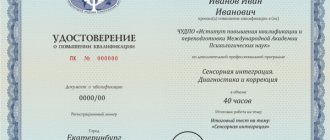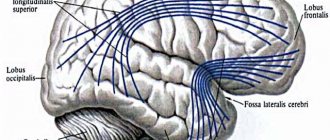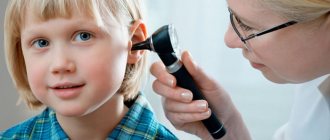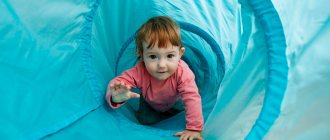Chapter 7. Disturbances of consciousness (somnolence, stupor and coma)
Impairments of consciousness are often encountered in medical practice. When assessing them, it is necessary to determine whether there is a change in the level of consciousness (stunning, stupor, coma) and (or) the content of consciousness (confusion, perseveration, hallucinations). Confusion means loss of clarity of thought and inattention: stupor is a condition where strong stimuli must be applied to obtain a response; coma is a state of insensitivity to external stimuli. These conditions are very serious, so it is necessary to find out their causes.
Approach to the patient
1. Maintaining vital functions. 2. Administration of glucose, thiamine, or naloxone (morphine antagonist) if the etiology is unclear. 3. Study of anamnesis, physical, laboratory, x-ray examination to determine the cause of the disease. 4. Adequate drug or surgical treatment.
Anamnesis
The patient should be awakened, if possible, and questioned about the use of insulin, narcotics, anticoagulants, other prescription drugs, suicide attempt, recent trauma, headache, epilepsy, and pre-existing medical conditions. Witnesses and family members must be interviewed, often by telephone. Sudden headache followed by loss of consciousness is suspicious for intracranial hemorrhage; dizziness, nausea, dysyupia, ataxia, unilateral sensitivity disorder - basilar insufficiency; chest pain, tachycardia and weakness - for cardiovascular pathology.
Immediate assessment of the situation
It is necessary to analyze the patient’s condition and carry out appropriate therapeutic measures. The blood is examined for sugar, Na, K, Ca, residual nitrogen, urea, alcohol, ALT activity; toxins. Fever, especially with skin rash, is suspicious for meningitis. Fever against the background of clear skin develops with heat shock or intoxication with anticholinergic drugs. With hypothermia, one should think about myxedema, intoxication, sepsis, radioactive exposure, hypoglycemia. High blood pressure accompanies intracranial hypertension and hypertensive encephalopathy.
Assessment of neurological status
It is necessary to determine the patient’s maximum functionality and symptoms, which will allow a detailed diagnosis to be established. Although impaired consciousness may accompany unilateral brain damage, in general the presence of stupor and coma implies bilateral damage to the cerebral cortex or dysfunction of the midbrain tegmentum (reticular activating system).
The patient's reactions to irritation. Stimulation is carried out with stimuli of varying strengths to assess the degree of reactions, as well as the asymmetry of sensorimotor functions. The patient's motor response can be conscious and reflexive. Spontaneous flexion of the upper limbs at the elbow joints with extension of the lower limbs is caused by decortication and accompanies a serious lesion in the opposite hemisphere above the midbrain. Extension of the elbows, wrists, and lower extremities is caused by decerebrate and suggests involvement of the diencephalon or midbrain. Reflexes associated with body posture may persist in profound encephalopathy.
Pupils. The presence of round, symmetrical pupils that react to light in a comatose patient allows us to exclude damage to the midbrain and assume a metabolic disorder as the cause of the coma. Pinpoint pupils occur in drug overdoses, with the exception of meperidine, which narrows the pupils to medium size. Small-diameter pupils are also observed with hydrocephalus or damage to the thalamus and pons. Damage to the midbrain or compression of the third cranial nerve (with transtentorial herniation) causes unilateral dilatation of the pupil, it becomes oval, and weakly reacts to light. Bilateral dilated pupils with loss of light responsiveness indicate severe bilateral midbrain damage, anticholinergic drug overdose, or ocular trauma.
Movements of the eyeballs. Voluntary and reflex movements of the eyeballs are examined to identify limitations in the range of their movements, involuntary movements and violations of the position of the ocular axes. An abductor resting position combined with an inability to externally rotate the eye indicates abducens (IV) nerve involvement, which is typical of increased intracranial pressure or pontine involvement.
An eye with a dilated pupil that does not respond to light is often retracted outward at rest and cannot be adducted due to dysfunction of the oculomotor nerve (III nerve) with transtentorial herniation. Vertical divergence of the axes of the eyeballs or strabismus occurs when the cerebellum or pons is damaged. The phenomenon of “doll eyes” (oculocephalic reflex) and cold stimulation of the vestibular apparatus (oculovestibular reflex) make it possible to diagnose damage to the cranial nerves in patients who are unable to voluntarily move the eyeballs. The oculocephalic reflex is tested by observing eye movement in response to passive turning of the head to the side (severe neck tissue trauma is a contraindication to this test). Free movement of the patient’s eyes with the phenomenon of “doll eyes” is observed with bilateral damage to the cerebral hemispheres. In a comatose patient with an intact brain stem, raising the head 60° from the horizontal level and introducing ice water into the external auditory canal causes a tonic deviation of gaze towards the irritation. In conscious patients, this test causes nystagmus, dizziness and vomiting.
Breath. Assessing breathing patterns can help determine the level of brain damage. Cheyne-Stokes breathing (periodic) is observed with bilateral damage to the cerebral hemispheres and is typical for metabolic encephalopathies. Breathing patterns that include difficulty breathing and apnea indicate damage to the lower parts of the brain stem; such patients usually require tracheal intubation and assisted ventilation.
Other. The sensorimotor functional activity of a patient in a coma can be assessed by his reflex reaction to stimuli; Minimal reflex asymmetry, which indicates a focal lesion, should be carefully assessed. If possible, a patient with impaired consciousness should have their gait assessed. Ataxia of a patient in stupor can serve as an important diagnostic sign of plus tissue in the cerebellum.
X-ray examination
Pathological factors that increase intracranial pressure usually lead to impaired consciousness. A CT or MRI study of the brain in a patient in a coma often reveals pathological changes, but is not informative in metabolic encephalopathy, meningitis, widespread anoxia or drug overdose, at the initial stage of ischemic stroke, encephalitis. Delaying treatment in these patients while awaiting CT and MRI scans can be dangerous. The condition of patients with impaired consciousness as a result of increased intracranial pressure can quickly deteriorate; in this case, urgent CT is indicated to confirm the presence of plus tissue and justify surgical intervention. CT scan is normal in some patients with subarachnoid hemorrhage, in which case the diagnosis is based on clinical findings of red blood cells in the cerebrospinal fluid (CSF). Cerebral or MR angiography is often necessary to identify basilar artery flow deficiency as a cause of coma in patients with brainstem symptoms.
Brain death
Occurs as a result of complete cessation of brain functions and blood circulation in it while the activity of the cardiovascular system continues (during auxiliary ventilation). An isoelectric line is recorded on the EEG, there is no reaction to external stimuli, and there are no brain stem reflexes. It should be borne in mind that this condition can be provoked by an overdose of drugs and hypothermia. The diagnosis of brain death is made if the situation does not change within a predetermined period (6-24 hours). To confirm apnea, it is necessary to establish that Pco2 is sufficient to stimulate respiration.
CONCEPT AND CHARACTERISTICS OF SENSORY PROCESSES article (junior group)
CONCEPT AND CHARACTERISTICS OF SENSORY PROCESSES
- Sensory development is the foundation of the mental development of preschool children
In my opinion, when raising a child, one of the main tasks is to develop his knowledge about the objects and phenomena of life around him. The formation of this knowledge begins with sensory acquaintance with the phenomena of the surrounding world, with sensations, with perceptions.
The first source of knowledge about the world is sensations. With the help of sensations, the child learns individual signs and properties of objects that directly affect his senses. This is how the baby learns that objects have their own taste, color, size, smell, sound, weight, temperature, etc. A more complex cognitive process is perception, which ensures the reflection of all (many) signs of an object with which the child is in direct contact. Sensory development has always been and remains important and necessary for the full upbringing of children. This is the gradual assimilation of the sensory culture created by humanity. Sensory development is a condition for successful mastery of any practical activity, and the origins of abilities lie in the general level of sensory development achieved in early preschool age
— Starting from the age of three, the main place in the sensory education of children is to familiarize them with generally accepted sensory standards and ways of using them. This is color, shades of color tones, geometric shapes, sizes. In the future, the richest possibilities for sensory development are hidden in such types of activities as play, work, constructive, and visual arts. Each of these activities has its own sensory basis. In visual activity, this is the perception and discrimination of color, shades, shape, size, spatial arrangement, proportions; in work activity - perception and discrimination of the characteristics of materials, their plasticity, texture, baric properties, etc. Speech plays a great role in the development of sensory cognition. The adult’s word captures the sensory experience acquired by the child and generalizes it: “This is a ball. It's round, it rolls." As the child masters speech, his sensations acquire a new quality: the word helps to isolate a new feature and see it in other objects. Introducing the names of various characteristics into the child’s vocabulary (sour, sweet, warm, cold, transparent, red, shiny, matte, etc.) helps develop the ability to compare - the most important mental operation. Verbal designations of the signs and properties of objects contribute to their meaningful perception and clear distinction. The significance of sensory development is that it organizes the child’s chaotic ideas obtained during interaction with the outside world, develops attention, develops observation, is the basis for intellectual development, and ensures the assimilation of sensory standards. Sensory standards are generalized sensory knowledge, sensory experience accumulated by humanity over the entire history of its development. The external qualities and properties of objects in the surrounding world are extremely diverse. In the course of historical practice, systems of those sensory qualities that are most significant for a particular activity have been identified: systems of measures of weight, length, directions, geometric shapes, color, size; norms of sound pronunciation, system of sounds in height, etc. The content of sensory education includes a wide range of signs and properties of objects that a child must comprehend throughout preschool childhood. Traditional content has developed in sensory education. This is an acquaintance with color, size, shape, taste, smell, texture, heaviness, sound of objects in the surrounding world, and orientation in space. In this case, the task is to increase the sensitivity of the corresponding analyzers (development of tactile, visual, olfactory, auditory sensitivity, etc.), which manifests itself in distinguishing signs and properties. At the same time, the child learns to correctly name the properties of objects (soft-hard, cold-warm, hot, bitter-sweet, light-heavy, bottom-top, right-left, far-close). In the domestic system of sensory education, the traditional content is expanded and supplemented by including time orientation, development of speech and musical hearing. Time orientation assumes that the child acquires ideas about parts of the day, days of the week, months, year, and the fluidity of time (it cannot be stopped, returned, or accelerated; it does not depend on the person). Speech (phonemic) hearing is the ability to perceive speech sounds, differentiate and generalize them in words as meaningful units. The development of phonemic hearing is associated with mastery of sound pronunciation norms. Musical hearing is the ability to distinguish sounds by pitch, timbre, rhythmic pattern, and melody. The teacher must create conditions for preschoolers to apply their acquired knowledge and skills to analyze the environment. Nature plays a special role in the sensory education of children. Cognition of the natural environment is initially carried out through the senses, using vision, hearing, touch, and smell. The more sense organs are “involved” in cognition, the more signs and properties the child identifies in the object or phenomenon being studied, and, consequently, the richer his ideas become. On the basis of such ideas, thought processes and imagination arise, and aesthetic feelings are formed. The success of mental, physical, and aesthetic education largely depends on how perfectly the child hears, sees, and touches the environment. Knowledge begins with the perception of objects and phenomena of the surrounding world. All other forms of cognition - memorization, thinking, imagination - are built on the basis of images of perception and are the result of their processing. Therefore, normal intellectual development is impossible without relying on full perception. [1]
1.2. Definition of sensory processes.
Sensory processes include sensation and perception, which I will discuss in my work below.
Sensation is an elementary mental process through which a person begins to understand the world around him. Sensations help develop other more complex mental processes: memory, thinking, perception.
Sensation is a reflection in a person’s consciousness of individual properties and qualities of objects and phenomena that directly affect his senses. The physiological basis of sensations is the activity of complex complexes of anatomical structures - analyzers, each of which in turn consists of three parts: a peripheral section called a receptor, nerve pathways, and cortical sections in which nerve impulses are processed.
Rice. 1.2. types of sensations.
All sensations can be characterized in terms of their properties. From a quality point of view, each type of sensation has its own specific characteristics that distinguish it from other types. Thus, auditory sensations are characterized by pitch, timbre, volume; visual - color tone, saturation, brightness, etc. The intensity of sensations is determined by the strength of the current stimulus and the functional state of the receptor. The duration is determined by the functional state of the sensory organ, the duration of the stimulus and its intensity. From the point of view of the sequence of the image, the continuation of the sensation when the action of the stimulus has already ceased. A positive sequential image corresponds to the initial irritation and consists in preserving a trace of irritation of the same quality as the actual stimulus. A negative sequential image consists in the emergence of a quality of sensation that is opposite to the quality of the stimulus that influenced it. Spatial localization of stimuli involves spatial analysis, which in turn is carried out by distant receptors and provides information about the localization of the stimulus in space. In some cases, the sensations are related to the part of the body that is affected by the stimulus (taste sensations), and sometimes they are more developed (pain sensations).
All the properties described above, to one degree or another, reflect the qualitative characteristics of sensations. However, no less important are the quantitative parameters of the main characteristics of sensations - the degree (thresholds) of sensitivity. The lower threshold of absolute sensitivity is characterized by the minimum intensity of impact required for the occurrence of sensation. The upper threshold of absolute sensitivity is characterized by a maximum value up to the painful intensity of the impact. The difference threshold is the minimum difference in the intensity of two similar impacts necessary for its sensations. [2]
It should be remembered that the weaker the stimuli that a person is able to sense, the higher his sensitivity. The change in sensitivity that occurs as a result of the adaptation of the sensory organ to the stimuli acting on it is called sensory adaptation. There are three modalities of this phenomenon:
1) complete disappearance of sensation during prolonged action of the stimulus;
2) dulling of sensation under the influence of a strong stimulus;
3) increased sensitivity under the influence of a weak stimulus. [2]
The reflection in the human mind of objects and phenomena in the totality of their properties and parts with their direct impact on the senses is called perception (perception). In the course of perception, individual sensations are ordered and combined into holistic images of things and events. Perception is associated with awareness, understanding, comprehension of objects and phenomena, with correlating them to a certain category according to the appropriate characteristics.
Perception is a complex cognitive activity that includes a whole system of perceptual actions that make it possible to detect an object of perception, identify it, measure it, and evaluate it. Perceptual actions are divided into measuring, measuring, construction, control, corrective and tonic-regulatory. The main properties of perception that determine its essence include objectivity, integrity, structure, meaningfulness, selectivity, constancy, apperception. The properties of perception that determine its productivity include volume, speed, accuracy, and reliability.
To summarize the above, we can say that the process of sensations is not a reflection of this or that property, but a very complex and active process in the activity of analyzers, and sensations not only carry information about the individual properties of phenomena and objects, but also perform an activating function of the brain. In turn, perception, being a sensory stage of cognition, is associated with thinking and has a motivational orientation, accompanied by an emotional response. It is on the basis of perception that the activity of memory, thinking, and imagination is possible. Thus, a person’s sensation and perception are necessary prerequisites and conditions for his life and practical activities.
1.3 Sensory education systems
A child learns about the world through sensations and perceptions that contribute to his sensory development. As is known, sensory education underlies mental education, since it is through sensory (from the Latin sensus - feelings) that a person learns about the properties and qualities of the world around him.
In the history of pedagogy, different systems of sensory education have developed. They differ from each other in psychological approaches to understanding the nature of perception and its relationship with thinking. Depending on this, the content of sensory education and its methodology are structured differently. Thus, the author of the world-famous system of sensory education, Maria Montessori, reduces the development of a child exclusively to the development of the body’s strengths and abilities: the development of muscles, vision, hearing, smell, etc. The didactic materials she has developed, selected accordingly, provide preschool children with sensory stimuli that exercise their senses. For example, to develop the tactile sense, exercises are offered with a set of smooth and emery boards, cards, and various fabrics; to develop the thermal sense - exercises with a set of metal cups filled with water of different temperatures; The baric feeling (sense of heaviness) is developed with the help of a set of wooden planks of the same size, but different in weight, etc. Please note that the external signs of objects are abstracted, separated from real objects and phenomena. By practicing with such materials, children achieved the acuity of their senses and the subtlety of distinguishing the sensory characteristics of objects. According to M. Montessori's idea, the child works with her materials independently, since they are built on the principle of autodidactism. The teacher does not teach, does not “interfere” with the natural course of development, does not impose his understanding, does not clarify in words what the child feels. As a result, the child, although finely distinguishing, for example, colors and shades, cannot name, compare, generalize, or apply them in other activities that go beyond the scope of exercises with didactic material. Without the guidance of an adult, rich sensory experiences do not become the foundation for the development of a child's thinking. The domestic system of sensory education is based on the theory of perception developed by L. S. Vygotsky, B. G. Ananyev, S.L. Rubinstein, A.N. Leontyev, A.V. Zaporozhets, L.A. Venger, etc. To develop perception, a child must master social sensory experience, which includes the most rational ways of examining objects, sensory standards. According to the latest research, sensation and perception are special actions of analyzers aimed at examining an object and its features. To develop a child’s analyzers means to teach him the actions of examining an object, which in psychology are called perceptual actions. With the help of perceptual actions, the child perceives new qualities and properties in an object: he strokes it to find out what the surface is like (smooth, rough); compresses to determine hardness (softness, elasticity), etc. The task of sensory education is to teach the child these actions in a timely manner. Generalized methods of examining objects are important for the formation of operations of comparison, generalization, and for the development of thought processes.
Sensory standards are generalized sensory knowledge, sensory experience accumulated by humanity over the entire history of its development. The external qualities and properties of objects in the surrounding world are extremely diverse. In the course of historical practice, systems of those sensory qualities that are most significant for a particular activity have been identified: systems of measures of weight, length, directions, geometric shapes, color, size; norms of sound pronunciation, a system of sounds in height, etc. Each sensory standard has its own verbal designation: measures of weight, measures of length, color spectrum, arrangement of notes on the stave, planar and three-dimensional geometric figures, etc. The assimilation of sensory standards is a long and complex process, the brunt of which falls on the years of schooling. Do preschoolers need sensory standards? A.V. Zaporozhets believes that a set of measurements and standards must be given in preschool age. Having mastered these standards, children will correlate any perceived quality with them and give it a definition. Thanks to these “units of measurement,” the child learns more fully and deeply the various properties of specific objects, and his perception acquires a purposeful and organized character.
The domestic system of sensory education is based on the recognition of the need to develop the child’s perception in the process of meaningful activities, organized not only in the classroom, but also in everyday life. When, for example, should children be introduced to the properties of water? Is it really possible to conduct special classes for this? Of course not! While washing, playing with water in the group room, on the site, the teacher teaches pupils inspection actions that help them understand the properties of water (transparent, odorless, tasteless, shapeless, flowing, comes in different temperatures, freezes in the cold, people swim in it and various objects drown, etc.). In the future, the richest possibilities for sensory development are hidden in such types of activities as play, work, constructive, and visual arts. [3]
Therefore, we need to accumulate the sensory experience of our beloved children starting from birth, using our imagination, nature and not letting everything take its course.
LIST OF SOURCES USED
1. Melyokhina I.V. Theory and practice of education in the modern world. 2014
2. Glukhanyuk N.S., Semyonova S.L., Pecherkina A.A. General psychology. M. 2002
3. S. A. Kozlova. Preschool pedagogy. Moscow. ACADEMA 2001.





